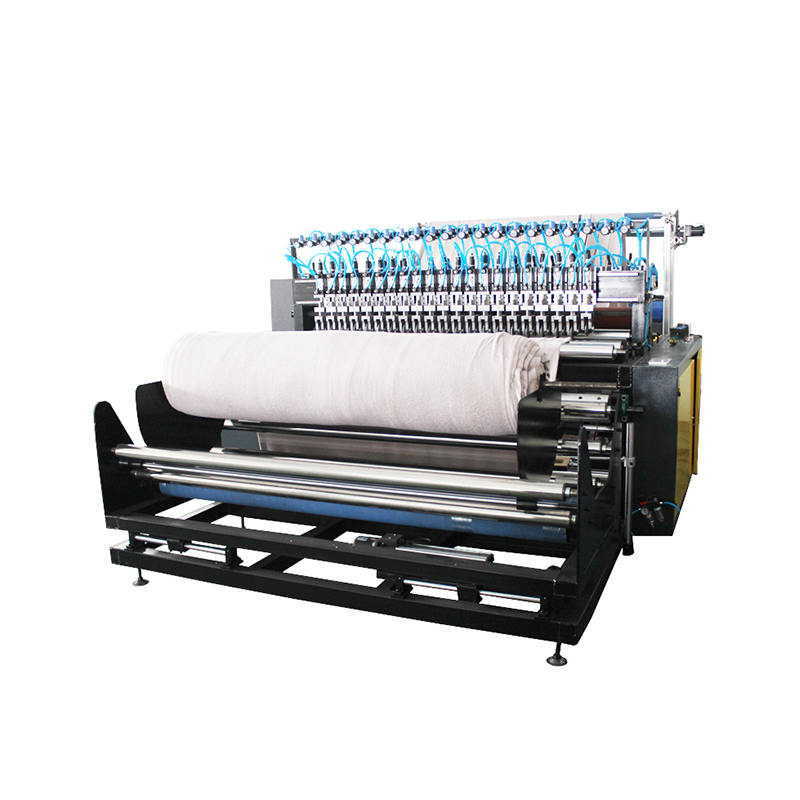
Minimizing heat buildup during prolonged use of ultrasonic textile slitting machines is crucial to ensure consistent performance, prevent material damage, and extend the lifespan of machine components. Below are key measures that can be taken to manage heat effectively:
Optimize Cutting Parameters
Adjust Frequency : Lowering the ultrasonic frequency can reduce heat generation while maintaining cutting efficiency. However, this must be balanced against cutting speed and quality.
Control Amplitude : Reducing the amplitude (vibration intensity) minimizes frictional heat but may require slower cutting speeds for thicker or denser materials.
Limit Power Input : Use only the necessary power to achieve the desired cut, as excessive energy input contributes to unnecessary heat generation.
Material-Specific Adjustments
Pre-Cooling Materials : For heat-sensitive textiles, pre-cooling the fabric before cutting can help dissipate heat more effectively.
Intermittent Cuts : Implementing short pauses between cuts allows the system to cool down, especially when processing large batches.
Use Heat-Resistant Fabrics : When possible, select materials with higher thermal tolerance to minimize the risk of melting or scorching.
Cooling Systems
Air Cooling : Integrate air blowers or fans to direct cool air over the horn and transducer during operation. This helps dissipate heat quickly.
Liquid Cooling : Advanced systems may use liquid cooling circuits to maintain optimal temperatures for critical components like the transducer and converter.
Heat Sinks : Incorporate heat sinks into the design of the machine to absorb and radiate excess heat away from the ultrasonic components.
Component Design and Maintenance
High-Quality Components : Use durable, high-performance materials for horns and transducers that can withstand higher temperatures without degradation.
Regular Inspection : Monitor components for signs of wear or overheating, such as discoloration or reduced performance, and replace them as needed.
Proper Alignment : Ensure precise alignment of the horn and anvil to minimize friction and uneven heat distribution.
Lubrication and Coatings
Anti-Friction Coatings : Apply specialized coatings to the horn or anvil surfaces to reduce friction and heat generation during cutting.
Dry Lubricants : Use dry lubricants like PTFE (Teflon) on contact surfaces to minimize heat-producing friction.

Machine Calibration
Calibrate Regularly : Periodically recalibrate the machine to ensure optimal performance and prevent excessive energy consumption, which can lead to heat buildup.
Balance Load : Distribute the workload evenly across multiple cutting heads if available, reducing the strain on individual components.
Operator Training
Training Programs : Educate operators on best practices for minimizing heat buildup, such as adjusting settings based on material type and thickness.
Real-Time Monitoring : Teach operators to recognize signs of overheating, such as unusual noises, smoke, or changes in cut quality, and take corrective action promptly.
Environmental Control
Ambient Temperature Management : Operate the machine in a well-ventilated area or climate-controlled environment to prevent external heat sources from exacerbating internal heat buildup.
Humidity Control : Maintain appropriate humidity levels to avoid condensation or moisture-related issues that could affect heat dissipation.
Software and Automation
Smart Controls : Implement software that automatically adjusts cutting parameters (e.g., frequency, amplitude) based on real-time temperature feedback.
Temperature Sensors : Install sensors to monitor component temperatures and trigger alerts or shutdowns if thresholds are exceeded.
Scheduled Downtime
Routine Breaks : Schedule regular breaks during long production runs to allow the machine to cool down naturally.
Maintenance Cycles : Perform routine maintenance, including cleaning and inspecting components, to ensure efficient heat dissipation and prevent overheating.
Copyright © ChangZhou AoHeng Machinery Co., Ltd. All Rights Reserved

 English
English 中文简体
中文简体 русский
русский Español
Español